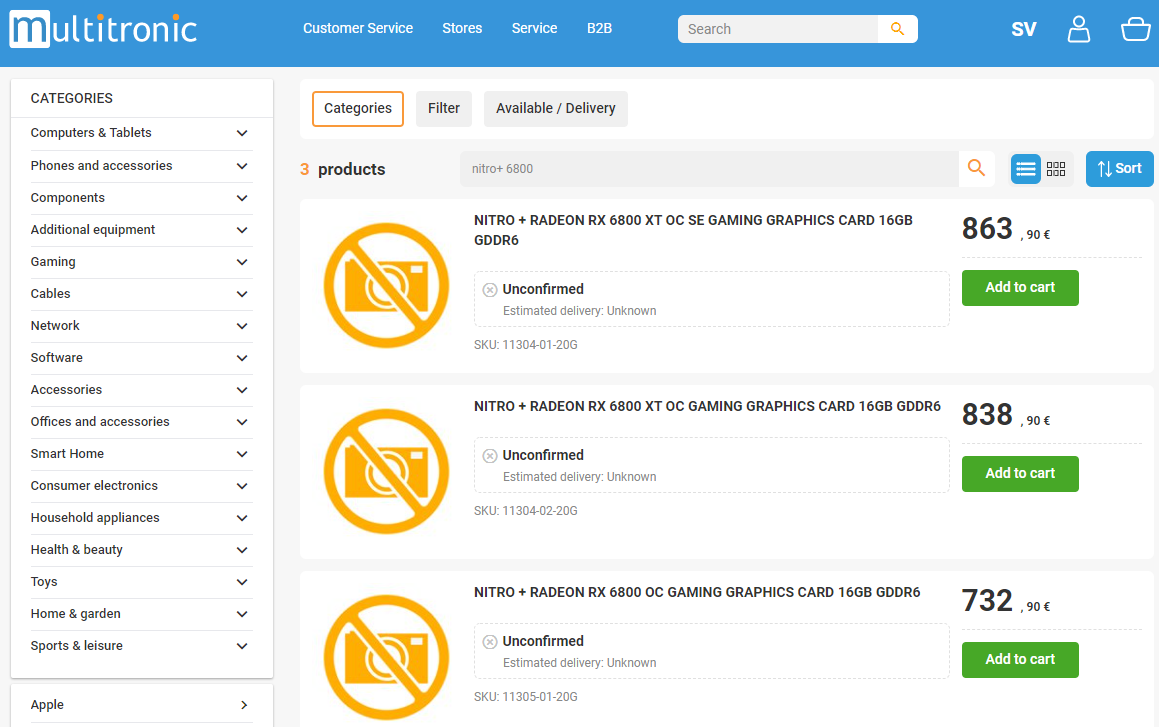SAPPHIRE Radeon RX 6800 NITRO to cost 733 to 864 EUR
All three Radeon RX 6800 NITRO+ graphics cards from Sapphire have been listed
by Multitronic, as spotted by
Wccftech.
This retailer is now offering these cards for preorder with an unconfirmed estimated delivery time. The listing appears before the sale embargo, thus it is very likely to disappear very soon.
The retailer listed two Radeon RX 6800 XT graphics cards, including the Special Edition featuring ARGB fans and USB Type-C connector. This model will cost 35 EUR more than the NITRO+ non-SE, which has a retail price of 839 EUR.
The non-XT NITRO+ model has been listed at 733 EUR, which is a lot more than the suggested US retail price of the reference model (579 USD) converted into euro: 490 EUR + 24% VAT = 607 EUR.

